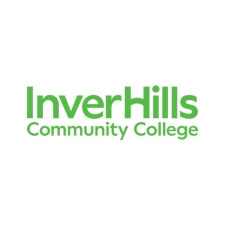
2500 80th Street East
Inver Grove Heights, MN 55076
United States
Certificates / Diplomas
Associate Degree
Cost
Living On-Campus
7,250
Living Off-Campus
19,850
Living with Family
19,850
Average Net Price
$10,733 / year
This is the average annual amount that first-time, full-time undergraduate students pay at this institution after subtracting all grants and scholarships from the cost of attendance.
Show Net Price details
Net cost after grants and scholarships by income
$0-$30,000:
$8,622
$30,001-$48,000:
$9,235
$48,001-$75,000:
$10,713
$75,001-$110,000:
$12,263
Over $110,000:
$15,005
This net price data shows the average amount students have paid, according to their family income, after subtracting all grants and scholarships.
College Profile
Student/Faculty Ratio
26:1
Size of Student Body
3,727
Average Class Size
25
Show Undergraduate Student Body details
Breakdown by Race
Black or African American:
21%
Hispanic:
16%
Asian:
7%
White:
49%
Two or more races:
5%
International Students:
1%
Unknown:
2%
Breakdown by Age
19 and Younger:
31%
20 to 24:
34%
25 to 34:
21%
35 to 44:
9%
45 and Older:
5%
Breakdown by Gender
Men:
39%
Women:
60%
New entering students who are transfers
45%
Student Success
Graduation Rate for Two-Year Programs
19%
Show Graduation Rate 2-yr Institution details
Completers within 3 years by race
Black or African American:
10%
Hispanic:
7%
Asian:
22%
Two or more races:
13%
Completers within 3 years by Gender
Men:
19%
Women:
19%
Retention Rate
55%
Show Retention Rate details
Retention Rate By Type
Full-time:
58%
Part-time:
44%
Campus Settings
Financial Aid
Average amount of federal, state, local, institutional or other sources of grant aid awarded to undergraduate students
$4,070
The following information pertains to first-time full-time undergraduate students.
Show Financial Aid details
Average amount of aid awarded to full-time first-time undergraduates
State/Local grant aid:
$1,351
Institutional grant aid:
$2,367
Federal grant aid:
$2,546
Average amount of grant aid awarded by income (all sources)
$0-$30,000:
$6,152
$30,001-$48,000:
$6,000
$48,001-$75,000:
$4,266
$75,001-$110,000:
$1,766
Over $110,000:
$289
School Scholarships
Yes
Financial Aid Contact
Cumulative Debt
This section shows the median debt graduates incurred to complete their degree at this institution.
Median Cumulative Debt by Degree Type
- Associate's Degree: $14,219
- Undergraduate Certificate: $8,750
Percent of Graduates With Loans
- Associate's Degree: 1,421,900%
- Undergraduate Certificate: 12%
Admission Information
Application Fee
$20
- System applications (online)
- System applications (paper)
- School applications (online)
- School applications (paper)
- Accuplacer, if required. The college uses multiple measures for course placement (https://www.inverhills.edu/help-center/testing-center/testing-exemptions/).
- High School Diploma or GED
- Some programs have additional requirements or applications, including Nursing, Emergency Medical Services, Law Enforcement, PSEO, and international students.
- Accepts dual credits
- Accepts exam-based credits
- Institution awards credits for military training
Application Timelines
Rolling Admissions Deadline
Up until term start.
Financial Aid Application Deadline
Late June (for Fall terms) and Late October (for Spring terms).
Open Admissions Deadline
1 week prior to term start
Admissions Contact
Graduate Employment Outcomes
The data displayed below comes from the Graduate Employment Outcomes tool and only reports on graduates employed in Minnesota. This section shows employment data for graduate class of 2020, including percent of graduates with full-time employment in the 3rd year after college graduation and the median annual wages by award level, according to the Minnesota unemployment insurance records. Data does not include federal employees, self-employed (e.g. professional freelancers, artists, developers, designers, business owners), military, or individuals who moved out of state for a job. The list below may be incomplete and limited to some majors. Additionally, data has been suppressed when it refers to 10 or less students.Jump to:
This profile features institution-wide data. Be aware that some categories may not be showing and that data is suppressed when reporting is for 10 or less students. Most data and terminology is sourced from IPEDS. To learn more about each section, please refer to Data Sources.
The College Search Tool provides information and reported data for postsecondary institutions in Minnesota that receive federal and state financial aid. For licensed occupational training providers in Minnesota, please visit OHE's Licensed Career Schools.

